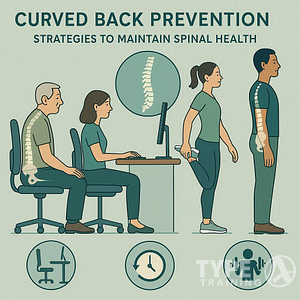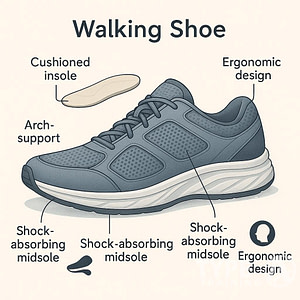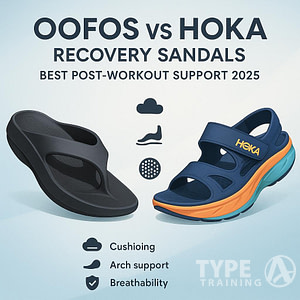When it comes to attracting and retaining top talent, companies are constantly seeking ways to stand out from the competition. With the ongoing talent wars, businesses are realizing that offering a comprehensive employee benefits package is no longer enough. Instead, they are turning to corporate fitness programs as a competitive differentiator.
(image credit: pearsonpartnersintl.com)
Not only can corporate fitness programs help attract and retain employees, but they also have the potential to boost productivity and reduce healthcare costs. In fact, according to a study by Deloitte, companies with strong health and wellness programs experience 11% greater profitability than those without. Additionally, employees who participate in such programs report higher job satisfaction and lower rates of absenteeism.
Popular posts:
As the pandemic continues to reshape the workforce, many employers are also recognizing the importance of providing flexible work arrangements and prioritizing employee well-being. By offering corporate fitness programs, companies can demonstrate their commitment to supporting their employees’ physical and mental health, while also creating a positive company culture and promoting collaboration and teamwork.
Recruitment Advantage
To win the talent war, companies need to offer more than just a competitive salary. One way to stand out from the competition is by offering wellness benefits. By highlighting wellness benefits in open job positions, companies can attract health-conscious candidates who prioritize work-life balance.
Wellness benefits highlighted in open job positions
According to a survey by the International Foundation of Employee Benefit Plans, 80% of employers offer wellness programs to their employees. By including wellness benefits in job postings, companies can showcase their commitment to employee health and well-being. This can help attract candidates who are looking for a company that values their health as much as their work.
Some examples of wellness benefits that companies can offer include:
- Gym memberships or fitness classes
- Mental health resources, such as counseling services or meditation sessions
- Healthy food options in the office
- Flexible work arrangements, such as remote work or flexible hours
By offering these benefits, companies can not only attract top talent, but also improve employee retention and productivity.
Campus recruiting focuses on health-supportive culture
Another way to emphasize wellness is through campus recruiting. By showcasing a health-supportive culture, companies can attract young talent who prioritize work-life balance and wellness.
Some ways companies can showcase a health-supportive culture during campus recruiting include:
- Hosting fitness events or classes on campus
- Providing healthy food options during recruiting events
- Highlighting the company’s wellness benefits and initiatives during presentations
By emphasizing wellness during campus recruiting, companies can attract candidates who are not only talented, but also share the company’s values and priorities.
In conclusion, offering wellness benefits and emphasizing a health-supportive culture can give companies a recruitment advantage in the talent war. By showcasing their commitment to employee health and well-being, companies can attract top talent and improve employee retention and productivity.
The Talent War Landscape
The corporate world has been engaged in a talent war for a long time, and it has only intensified in recent years. Understanding the talent wars and the factors that drive them is crucial for any organization that wants to succeed in this competitive environment.
Understanding Talent Wars
Talent wars refer to the competition between companies to attract and retain the best talent available in the market. This competition has become increasingly intense due to the growing demand for skilled workers and the shortage of talent in some industries. As a result, companies are fighting battles to secure top talent, and the stakes are high.
Recruiting has become a critical aspect of talent wars. Companies are investing more resources in talent acquisition, including building a strong talent pool and poaching employees from competitors. The competition is fierce, and companies that fail to recruit top talent risk falling behind their competitors.
The Great Resignation
The Great Resignation is a term used to describe the wave of employees leaving their jobs in 2021 and 2022. This phenomenon has been attributed to a variety of factors, including burnout, a desire for better work-life balance, and a search for more fulfilling work. The Great Resignation has added a new dimension to talent wars, as companies struggle to retain their existing talent while also attracting new talent.
In conclusion, talent wars are a reality of the modern business world, and companies must be prepared to compete for top talent. Understanding the landscape of talent wars, including the Great Resignation, is crucial for organizations that want to succeed in this competitive environment. By investing in talent acquisition and retention strategies, companies can gain a competitive advantage and differentiate themselves in the talent wars.
Retention Edge
(image credit: netsuite.com)
In the competitive talent market, employee retention has become a critical factor for companies seeking to gain a competitive edge. By understanding the importance of employee satisfaction and longevity, organizations can develop strategies to retain top talent and avoid costly recruitment and training expenses.
Fitness perks increase employee satisfaction and longevity
One way to improve employee satisfaction and longevity is to offer fitness perks. Providing access to on-site gyms, fitness classes, or wellness programs can help employees maintain a healthy work-life balance. Studies have shown that employees who exercise regularly are more productive, have better mental health, and are less likely to take sick days. By offering fitness perks, companies can demonstrate their commitment to employee well-being and create a positive work environment.
Low turnover saves recruitment/training costs
Low turnover rates can also save companies recruitment and training costs. When employees leave, companies must invest time and resources in finding and training replacements. High turnover rates can also negatively impact morale and productivity. By creating a positive work environment and offering competitive benefits, companies can reduce turnover rates and retain top talent.
In conclusion, offering fitness perks and reducing turnover rates can help companies gain a competitive edge in the talent market. By prioritizing employee satisfaction and longevity, companies can retain top talent, reduce recruitment and training costs, and create a positive work environment.
Employer Branding
In today’s competitive talent market, having a strong employer brand is crucial for attracting and retaining top talent. A company’s employer brand is the perception that current and potential employees have of the organization as a place to work. It encompasses everything from the company’s mission, values, and culture to its reputation in the industry and the benefits it offers to employees.
Wellness values portrayed in marketing and on company website
One way to strengthen your employer brand is to showcase your company’s commitment to wellness. This can be done by highlighting the wellness perks and benefits that you offer to employees, such as gym memberships, healthy food options, and mental health support. You can also demonstrate your wellness values by incorporating them into your marketing materials and on your company website. For example, you could feature employee success stories related to wellness initiatives, or highlight your company’s participation in community wellness events.
Positive culture demonstrated through social media
Another way to enhance your employer brand is to demonstrate a positive company culture through social media. Social media is a powerful tool for showcasing your company’s values, mission, and culture. You can use social media to highlight employee achievements, share behind-the-scenes glimpses of company culture, and showcase the impact that your company is making in the community. By demonstrating a positive and engaging company culture, you can attract top talent who are looking for a workplace where they can thrive.
In addition to attracting top talent, investing in your employer brand can also have long-term benefits for your company. For example, offering fitness perks can increase employee satisfaction and longevity, leading to lower turnover rates and reduced recruitment and training costs. By showcasing your commitment to wellness and positive company culture, you can differentiate your company from competitors and position yourself as a top employer in your industry.
Overall, investing in your employer brand is a smart strategy for attracting and retaining top talent in today’s competitive talent market. By showcasing your commitment to wellness and positive company culture, you can differentiate your company from competitors and position yourself as a top employer in your industry.
Compensation Package
When it comes to attracting and retaining top talent, a competitive compensation package is crucial. In addition to base pay, many companies are now offering a range of benefits and perks to stand out in the talent wars. One of the most valuable non-cash rewards that companies can offer is fitness subsidies. By providing employees with access to gyms, fitness classes, and wellness programs, companies can not only improve employee health and productivity but also demonstrate a commitment to employee well-being.
In the past, compensation packages were often viewed as a simple exchange of money for work. However, today’s total rewards packages are much more complex and competitive. In order to compete for top candidates, companies need to offer a range of benefits and perks, including health insurance, retirement plans, paid time off, and more. By providing a comprehensive package of rewards and benefits, companies can demonstrate their commitment to employees and stand out in the talent wars.
When designing a compensation package, it’s important to consider the needs and preferences of your target audience. For example, younger employees may be more interested in flexible work arrangements and career development opportunities, while older employees may be more interested in retirement benefits and healthcare coverage. By tailoring your compensation package to the needs of your employees, you can create a more attractive and competitive offering.
In addition to traditional benefits, many companies are also offering unique perks such as on-site fitness centers, healthy snacks, and wellness programs. These perks not only improve employee health and well-being but also create a positive company culture that can help attract and retain top talent.
Overall, a competitive compensation package is essential for any company looking to stand out in the talent wars. By offering a range of benefits and perks, including fitness subsidies and other non-cash rewards, companies can demonstrate their commitment to employees and create a more attractive and competitive offering.
Talent Attraction
(image credit: ismartrecruit.com)
When it comes to attracting top talent, offering a comprehensive wellness program can be a key differentiator. In today’s job market, prospective employees are increasingly looking for companies that prioritize their health and well-being. By offering amenities that appeal to millennials and Gen Z’s wellness priorities, and aligning with prospective hires’ health values, companies can set themselves apart from the competition.
Amenities appeal to Millennials and Gen Z’s wellness priorities
Millennials and Gen Z are known for being health-conscious and prioritizing wellness in their daily lives. This means that companies that offer amenities like a state-of-the-art gym, healthy snacks in the break room, and standing desks are more likely to attract top talent from these generations.
Additionally, offering wellness programs like yoga classes, meditation sessions, and nutrition workshops can help prospective employees see that your company values their health and well-being. By providing these amenities, you can show that you care about your employees’ physical and mental health, which can lead to increased job satisfaction and retention.
Health values align with prospective hires
Another way to attract top talent is by aligning with prospective hires’ health values. This means that companies should prioritize health and wellness in their overall culture and mission. For example, companies that prioritize sustainability and eco-friendliness may attract employees who value a healthy environment.
Similarly, companies that prioritize mental health and work-life balance may attract employees who prioritize their own well-being. By aligning with prospective hires’ values, companies can attract employees who are more likely to be engaged and committed to their work.
In summary, offering wellness amenities and aligning with prospective hires’ health values can be a powerful way to attract top talent. By prioritizing employee health and well-being, companies can set themselves apart from the competition and create a culture of wellness that benefits everyone.
Differentiated Value Proposition
(image credit: bowerhr.co.uk)
In today’s competitive talent wars, having a differentiated value proposition can be the key to attracting and retaining top talent. One area where companies can differentiate themselves is in their corporate fitness programs. By offering a comprehensive and fully developed fitness program, companies can stand out from their competitors and create a culture of health and wellness that attracts and retains top talent.
Competitors cannot easily replicate fully developed programs
One advantage of a fully developed corporate fitness program is that it is not easily replicable by competitors. Developing a comprehensive program takes time, resources, and expertise, and companies that invest in these areas are more likely to create a program that is unique and difficult to replicate. This can give companies a competitive advantage in the talent wars, as top candidates are more likely to be attracted to a company that offers a comprehensive fitness program that is not available elsewhere.
Proprietary fitness culture protects talent advantage
Another advantage of a fully developed corporate fitness program is that it can create a proprietary fitness culture that protects a company’s talent advantage. By creating a culture of health and wellness that is unique to the company, employees are more likely to feel a sense of belonging and loyalty to the company. This can make it more difficult for competitors to poach top talent, as employees are less likely to leave a company that offers a unique and supportive fitness culture.
In summary, offering a comprehensive and fully developed corporate fitness program can be a key differentiator in the talent wars. By creating a program that is difficult to replicate and that fosters a proprietary fitness culture, companies can attract and retain top talent and gain a competitive advantage in the marketplace.
Leveraging Technology in Talent Management
In today’s fast-paced business world, technology is becoming increasingly important in the talent management process. Companies are leveraging technology to attract, retain, and develop top talent. Here are a few ways technology is being used to gain a competitive edge in the talent wars.
Role of Data
One of the most significant benefits of technology in talent management is the ability to collect and analyze data. Companies can use data to identify top performers, understand employee engagement levels, and predict potential turnover. With data-driven insights, companies can make informed decisions about how to invest in their employees and create a more engaging workplace.
In addition, technology can help companies streamline their recruitment processes. With applicant tracking systems (ATS), companies can manage job postings, resumes, and candidate communications in one centralized location. This not only saves time but also ensures that the recruitment process is fair and consistent.
Upskilling and Learning Development
Another way technology is being used in talent management is through upskilling and learning development. With the rise of automation and artificial intelligence, many jobs are becoming obsolete, and new skills are in demand. Companies can use technology to provide their employees with the training and development they need to stay competitive in the job market.
Online learning platforms, such as Coursera and Udemy, offer a wide range of courses and certifications that employees can take to upskill themselves. In addition, companies can use learning management systems (LMS) to create customized training programs that align with their business goals and employee needs.
By investing in their employees’ skills and development, companies can not only retain top talent but also attract new talent. In today’s job market, employees are looking for employers who offer opportunities for growth and development.
In conclusion, technology is a critical tool for companies looking to gain a competitive edge in the talent wars. By leveraging data and upskilling and learning development, companies can attract, retain, and develop top talent. With the right technology in place, companies can create a more engaging workplace and stay ahead of the competition.
The Impact of Covid-19 on Corporate Fitness
(image credit: ihrsa.org)
The Covid-19 pandemic has had a significant impact on the way businesses operate, and corporate fitness is no exception. As companies have shifted to remote work, many have also had to adjust their approach to fitness and wellness programs. In this section, we will explore how the pandemic has affected corporate fitness and how companies can adapt their hiring practices and build trust amidst uncertainty.
Adapting Hiring Practices
The pandemic has made it more challenging for companies to attract and retain top talent. With remote work becoming the norm, employees are looking for companies that prioritize their health and well-being. This has led to an increased demand for corporate fitness programs that can be accessed from home.
To adapt their hiring practices, companies should consider offering flexible work arrangements and investing in virtual fitness programs. This can help attract and retain employees who value work-life balance and prioritize their health and wellness.
Building Trust Amidst Uncertainty
The pandemic has created a great deal of uncertainty, and employees are looking to their employers for guidance and support. Companies that prioritize their employees’ health and well-being can build trust and loyalty among their workforce.
To build trust amidst uncertainty, companies should communicate openly and transparently with their employees about their health and safety measures. They should also invest in employee wellness programs that prioritize mental and physical health.
In conclusion, the Covid-19 pandemic has had a significant impact on corporate fitness, but companies can adapt their hiring practices and build trust amidst uncertainty by investing in virtual fitness programs and prioritizing employee wellness.
The Value of a Strong Mission and Vision
(image credit: mpowr.com)
A strong mission and vision can be a powerful tool in attracting and retaining top talent in today’s competitive job market. When employees feel aligned with a company’s mission and vision, they are more likely to feel a sense of purpose and fulfillment in their work. This can lead to increased job satisfaction and productivity, which can ultimately benefit the company’s bottom line.
Aligning Corporate Values
A company’s mission and vision should be aligned with its corporate values. This alignment ensures that the company’s actions and decisions are consistent with its stated values, which can help build trust with employees and customers alike. When employees see that their company is living up to its values, they are more likely to feel proud to work there and to be motivated to do their best work.
Attracting Talent with Purpose
In today’s job market, many candidates are looking for more than just a paycheck. They want to work for a company that shares their values and makes a positive impact on the world. A strong mission and vision can help attract these candidates by communicating the company’s purpose and values. When candidates see that a company is committed to making a difference, they are more likely to be interested in working there.
In conclusion, a strong mission and vision can be a powerful tool in attracting and retaining top talent. By aligning corporate values and communicating a sense of purpose, companies can build a culture that fosters employee engagement and productivity.
Legal Considerations in Talent Wars
Understanding Legal Challenges
In the midst of the ongoing talent wars, businesses are facing a number of legal challenges. For instance, non-compete agreements, which are designed to prevent employees from leaving and taking their skills to competitors, can be difficult to enforce. Courts often scrutinize non-compete agreements to determine whether they are reasonable and necessary to protect a company’s legitimate business interests. In some states, non-compete agreements are unenforceable or severely limited.
Another legal challenge is the protection of trade secrets. Employers have a duty to safeguard their confidential business information, but employees have a right to use their skills and knowledge in future employment. Thus, companies must have clear policies and procedures in place to ensure that employees do not misappropriate trade secrets when they leave.
Protecting Business Interests
To protect your business interests in the talent wars, it is essential to have a comprehensive strategy that takes into account legal considerations. Here are some key steps to consider:
- Conduct a risk assessment: Identify the risks that your business faces in terms of losing valuable employees and intellectual property.
- Review and update your employment agreements: Ensure that your employment agreements, including non-compete and non-solicitation clauses, are up-to-date and enforceable in your jurisdiction.
- Implement strong policies and procedures: Have clear policies and procedures in place to protect your confidential business information, including trade secrets and customer data.
- Monitor your employees’ activities: Keep an eye on your employees’ activities, especially those who are leaving or have recently left your company. This can help you detect any potential misappropriation of trade secrets or other confidential information.
- Be prepared to take legal action: If you suspect that a former employee has violated their employment agreement or misappropriated your trade secrets, be prepared to take legal action to protect your business interests.
In conclusion, businesses must be aware of the legal challenges they face in the talent wars and take steps to protect their interests. By understanding the legal landscape and implementing strong policies and procedures, you can minimize the risks associated with losing valuable employees and intellectual property.
The Role of Managers in Talent Wars
In the current job market, companies are competing fiercely to attract and retain top talent. As a manager, you play a crucial role in this talent war. In this section, we will discuss your responsibilities and resources as well as how to motivate high performers.
Responsibilities and Resources
As a manager, it is your responsibility to create a work environment that fosters employee engagement and productivity. This includes providing your team with the necessary resources to perform their jobs effectively. You should ensure that your team has access to the right tools, training, and support to help them succeed. This can include providing them with the latest technology, offering training programs, and providing regular feedback and coaching.
Additionally, you should be actively involved in the recruitment and retention of top talent. This means working closely with HR to identify the skills and experience needed for each role and actively seeking out candidates who meet those criteria. You should also be aware of the latest trends and best practices in talent management and be willing to adapt your approach as needed.
Motivating High Performers
High performers are the lifeblood of any organization, and it is your job as a manager to keep them motivated and engaged. One of the most effective ways to do this is by providing them with challenging and meaningful work. This can include giving them opportunities to take on new projects or responsibilities that align with their interests and strengths.
You should also be willing to recognize and reward high performers for their contributions. This can include offering promotions, bonuses, or other incentives to keep them motivated and engaged. It is important to remember that high performers are often in high demand, and if they feel undervalued or unappreciated, they may be more likely to leave for a more rewarding opportunity elsewhere.
In conclusion, managers play a critical role in the talent war by creating a work environment that fosters engagement and productivity, actively recruiting and retaining top talent, and motivating high performers to stay engaged and committed to the organization. By focusing on these key areas, you can help your organization gain a competitive advantage in the talent war and attract and retain the best and brightest employees.
Case Study: Deloitte’s Approach to Corporate Fitness
Deloitte is a professional services firm that has long recognized the importance of employee engagement and well-being. In fact, Deloitte has made it a priority to create a culture that supports and encourages employees to prioritize their health and wellness. By doing so, Deloitte has not only improved the health of their employees, but they have also gained a competitive edge in the talent wars.
Deloitte’s Talent Management
Deloitte’s approach to talent management is centered around the belief that their people are their greatest asset. As such, they have invested extensive resources and time in their rigorous performance management process. This process includes regular feedback, coaching, and development opportunities, which help employees grow and develop in their careers.
In addition, Deloitte recognizes that employees have different needs and preferences when it comes to their work and their lives outside of work. To accommodate these differences, they offer flexible work arrangements, such as telecommuting and flexible schedules. This flexibility allows employees to better balance their work and personal lives, which in turn leads to greater job satisfaction and better overall well-being.
Deloitte’s Culture and Values
Deloitte’s culture and values are centered around a commitment to excellence, integrity, and collaboration. They believe that by fostering a culture of respect and inclusivity, they can create an environment where employees feel valued and supported. This, in turn, leads to greater engagement and productivity.
To support this culture, Deloitte has implemented a number of programs and initiatives designed to promote employee well-being. For example, they offer a comprehensive wellness program that includes resources and support for physical, emotional, and financial wellness. They also offer a variety of employee resource groups, which provide opportunities for employees to connect with one another and build relationships across the organization.
In conclusion, Deloitte’s approach to corporate fitness is a prime example of how investing in employee well-being can be a competitive differentiator in the talent wars. By prioritizing talent management, culture, and values, Deloitte has created an environment where employees feel valued, supported, and empowered to prioritize their health and wellness. This, in turn, has led to greater engagement, productivity, and overall success for the organization.
Frequently Asked Questions
What are some effective talent acquisition strategies?
To attract top talent, companies need to have a comprehensive recruitment strategy. This includes utilizing multiple channels to reach potential candidates, such as job boards, social media, and employee referrals. Companies should also have a strong employer brand and a positive reputation in the industry. Additionally, offering competitive compensation and benefits packages can be a strong incentive for candidates to choose your company over others.
What role does talent management play in creating a competitive advantage?
Talent management is crucial for creating a competitive advantage in the talent wars. This includes identifying and developing high-potential employees, providing opportunities for growth and development, and creating a positive work culture that encourages employee engagement and retention. Companies that prioritize talent management are more likely to attract and retain top talent, which can ultimately lead to increased productivity and profitability.
How can companies become more competitive in talent acquisition?
To become more competitive in talent acquisition, companies need to stay up-to-date with the latest recruitment trends and technologies. This includes utilizing data analytics to identify potential candidates, leveraging social media and other digital channels to reach a wider audience, and offering flexible working arrangements to appeal to a diverse range of candidates. Additionally, companies should focus on building a strong employer brand and creating a positive candidate experience throughout the recruitment process.
What are some statistics on talent attraction?
According to a recent study by LinkedIn, the top three factors that attract candidates to a new job are career growth opportunities, salary and benefits, and work-life balance. Additionally, 75% of candidates research a company’s reputation and employer brand before applying for a job, highlighting the importance of having a strong online presence and positive reputation in the industry.
What are some challenges in attracting top talent?
One of the biggest challenges in attracting top talent is competition from other companies. With the talent wars heating up, companies need to offer competitive compensation and benefits packages, as well as a positive work culture and growth opportunities. Additionally, a shortage of skilled workers in certain industries can make it difficult to find qualified candidates.
How can companies retain staff and prevent them from going to competitors?
To retain staff and prevent them from going to competitors, companies need to prioritize employee engagement and development. This includes offering opportunities for growth and advancement, providing regular feedback and recognition, and creating a positive work environment that supports work-life balance and employee well-being. Additionally, offering competitive compensation and benefits packages can be a strong incentive for employees to stay with your company.

















